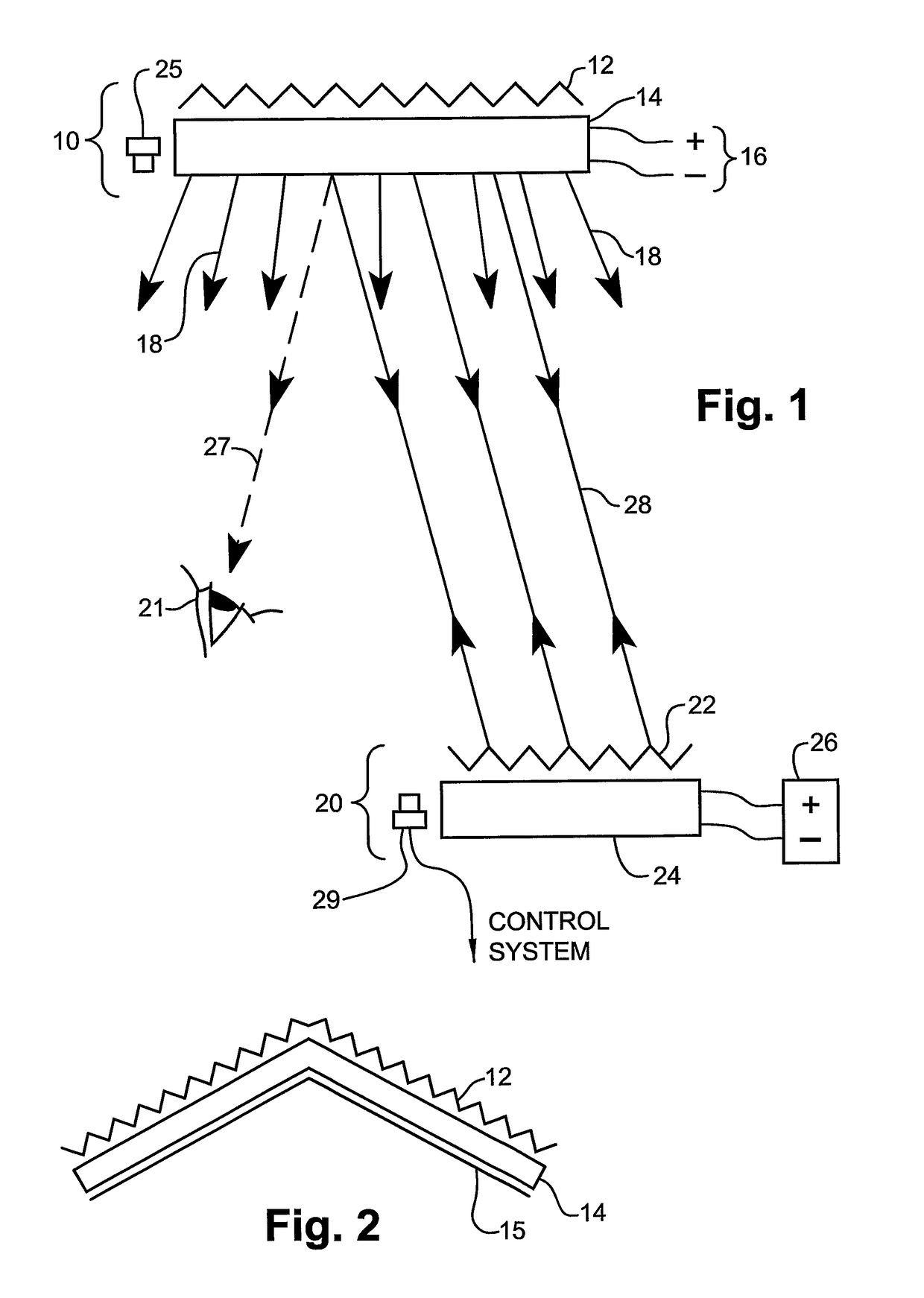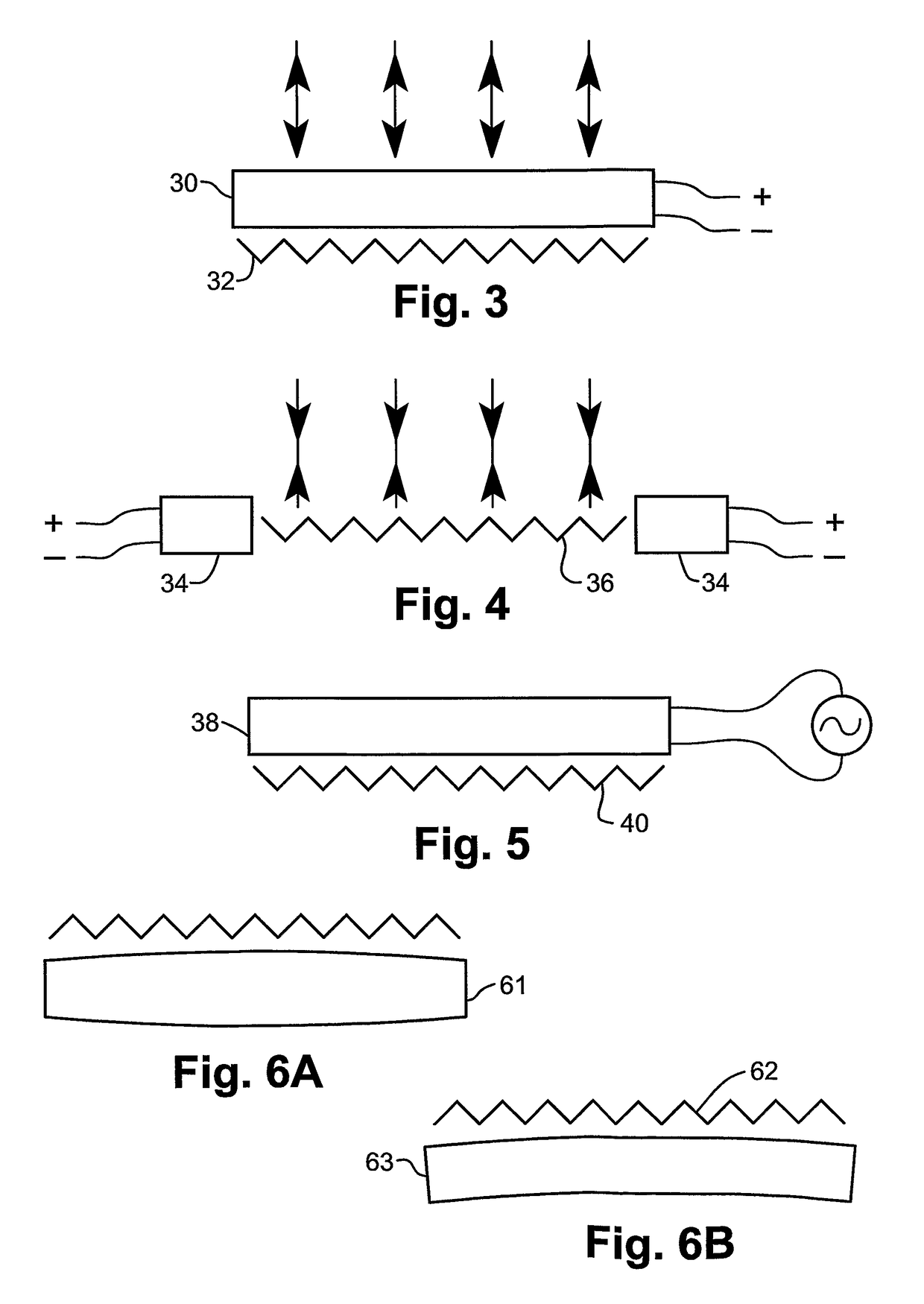Directional light transmitter and receiver
a directional light transmitter and receiver technology, applied in the direction of electromagnetic transmission, electromagnetic transmission optical aspects, electrical equipment, etc., can solve the problems of increasing the risk of health effects of electromagnetic transmission, needing to recharge the battery, and increasing the power consumption. achieve the effect of energy efficient and safe manner
- Summary
- Abstract
- Description
- Claims
- Application Information
AI Technical Summary
Benefits of technology
Problems solved by technology
Method used
Image
Examples
Embodiment Construction
[0058]Reference is now made to FIG. 1, which is a schematic illustration of a complete transmission and reception system, constructed according to a first preferred embodiment of the present invention. The transmitter 10, preferably mounted in a position where it can radiate into the whole of the volume to be covered, comprises a 3-dimensional retroreflector array 12, in front of which is disposed a gain material 14, preferably excited by means of an electrical excitation input 16, though other forms of excitation such as optical or chemical pumping can equally be used with suitable gain media. The gain material is preferably provided with anti-reflection optical coatings to improve its performance, as is known in the art.
[0059]When the excitation generates a population inversion in the gain material 14, it will emit photons in all directions 18. In the absence of a receiver, these photons will generally be absorbed by the surroundings, and since their flux level is low, they presen...
PUM
 Login to View More
Login to View More Abstract
Description
Claims
Application Information
 Login to View More
Login to View More - R&D
- Intellectual Property
- Life Sciences
- Materials
- Tech Scout
- Unparalleled Data Quality
- Higher Quality Content
- 60% Fewer Hallucinations
Browse by: Latest US Patents, China's latest patents, Technical Efficacy Thesaurus, Application Domain, Technology Topic, Popular Technical Reports.
© 2025 PatSnap. All rights reserved.Legal|Privacy policy|Modern Slavery Act Transparency Statement|Sitemap|About US| Contact US: help@patsnap.com



